Strong National Environmental Leadership in New Construction!

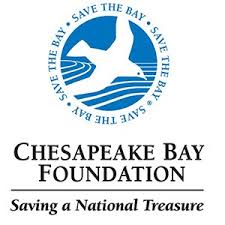 9 months ago I wrote a post titled “2 Internationally Recognized Thought-Leaders — One Local…” The local thought-leader is the Chesapeake Bay Foundation which mission is to save the Bay through education, advocacy, litigation and restoration.
9 months ago I wrote a post titled “2 Internationally Recognized Thought-Leaders — One Local…” The local thought-leader is the Chesapeake Bay Foundation which mission is to save the Bay through education, advocacy, litigation and restoration.
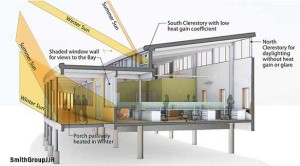
I discussed at a cursory level the CBF’s new Brock Environmental Center in Virginia Beach, now nearing completion. 10 days ago I attended a presentation about the project by CBF Vice President of Administration Mary Tod Winchester (with the CBF for 43 years). I was very excited by the presentation of the most sustainable features of the new building which targets the International Living Future Institute (ILFI)’s Living Building Challenge certification; as well as LEED Platinum certification which the CBF achieved as the first anywhere in the U.S. nearly 15 years ago for its Philip Merrill Center HQ building in Annapolis.
From the architect’s website: “The [CBF] envisioned transcending LEED, achieving zero-net-CO2 emissions and zero waste leaving the site–a new and significant paradigm for sustainability.” This more aggressive stance around sustainable buildings is shepherded through the Living Building Challenge 3rd-party rating system (also see the above-mentioned post for more about the LBC).
The Brock Center building is 10,000 sq. ft. and is built 14 ft. above sea level. Why? To account for a combination of sea level rise and storm surge.
The Center’s exterior walls have an insulation value of R-45. Wow! New homes, and many renovated homes (including mine), have attics featuring R-values in the high 40s. But, exterior walls are more like R-19, as in the new Formation Building. Contributing to this amazing R-value for the exterior walls is a product new to me, Liquid TYVEK. It’s a fluid-applied air barrier which helps considerably in meeting extraordinary energy efficiency goals.
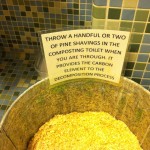 As with the Merrill Center, the Brock Center features composting toilets. Difference in the Virginia Beach building is that the waste receptacles below are concrete cylinders which can be capped off to insure against untreated spillage in the event of a monster storm. Incidentally, waste from urinals is processed through a Struvite reactor where the major component of it is extracted and converted into granulated phosphorous (natural rather than synthetic), or solid fertilizer.
As with the Merrill Center, the Brock Center features composting toilets. Difference in the Virginia Beach building is that the waste receptacles below are concrete cylinders which can be capped off to insure against untreated spillage in the event of a monster storm. Incidentally, waste from urinals is processed through a Struvite reactor where the major component of it is extracted and converted into granulated phosphorous (natural rather than synthetic), or solid fertilizer.
Rain gardens are in ample supply, insuring that runoff from the roof can percolate into the ground rather than running into the adjacent Lynnhaven River.
Some discussion after the presentation centered around the LBC’s Red List petal. That’s a list of hazardous chemicals prohibited in any products that might be employed in constructing a new building; or, materials that the International Living Future Institute wants phased out of production due to health/toxicity concerns. This list is a major challenge to building owners and developers, with Winchester saying as much.
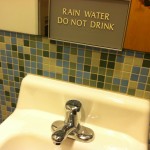 So, in total, the Brock Environmental Center will be net-zero water and net-zero energy, among its features. A building system will harvest drinking water on-site. Treated grey water, recovered from the roof and elsewhere on the site, will be used for all other needs.
So, in total, the Brock Environmental Center will be net-zero water and net-zero energy, among its features. A building system will harvest drinking water on-site. Treated grey water, recovered from the roof and elsewhere on the site, will be used for all other needs.
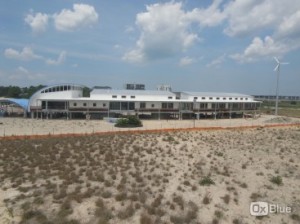
Two small-scale wind turbines on the property will assist in power generation. And, per LBC requirement, the same quantity of acreage the new building sets on must be donated by the CBF to the public interest as undeveloped land in perpetuity. LBC calls it “habitat exchange.” Radical, eh?
One more mention- The building’s Embodied Carbon Footprint must be offset per LBC requirement. Offsetting is accomplished by supporting a new, renewable energy project through the purchase of renewable energy certificates (RECs).
The Center will open sometime in September for operations and visitors. Here’s a drone video of the project from July. (If going to visit, be sure you check out the “dog trot.”)
One current LBC-certified building is the Omega Center for Sustainability in New York’s Hudson River Valley which is noted for its Eco Machine. The Eco Machine™ is a water reclamation system that cleans water by mimicking the nature’s process.
In Sundry Department- Dead Zone is back, big-time
I was disheartened to learn that the Chesapeake Bay’s “dead zone” spiked earlier in August. Sub-title of the article is: “After record improvement in July, low oxygen levels again choke estuary.” Ugh!